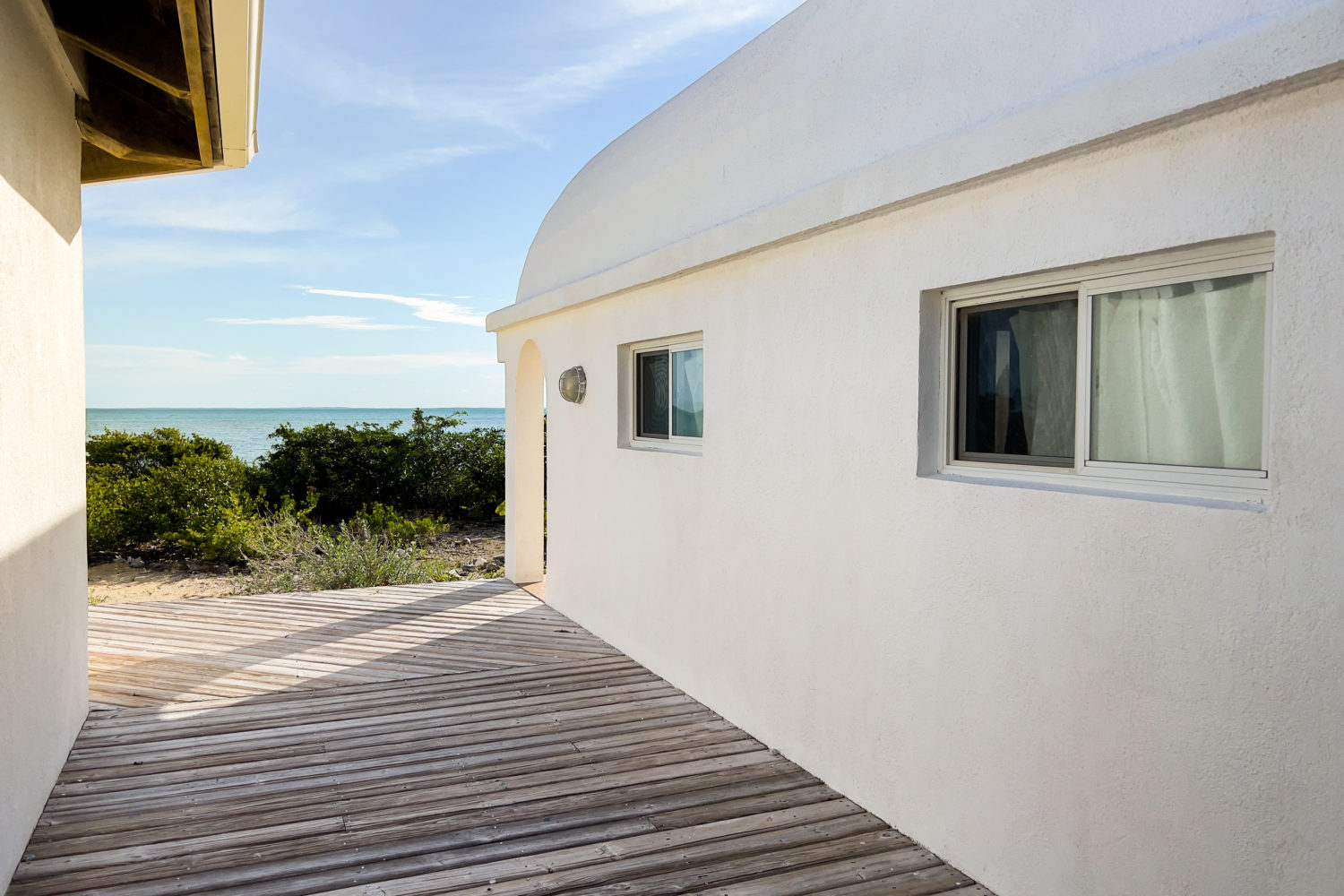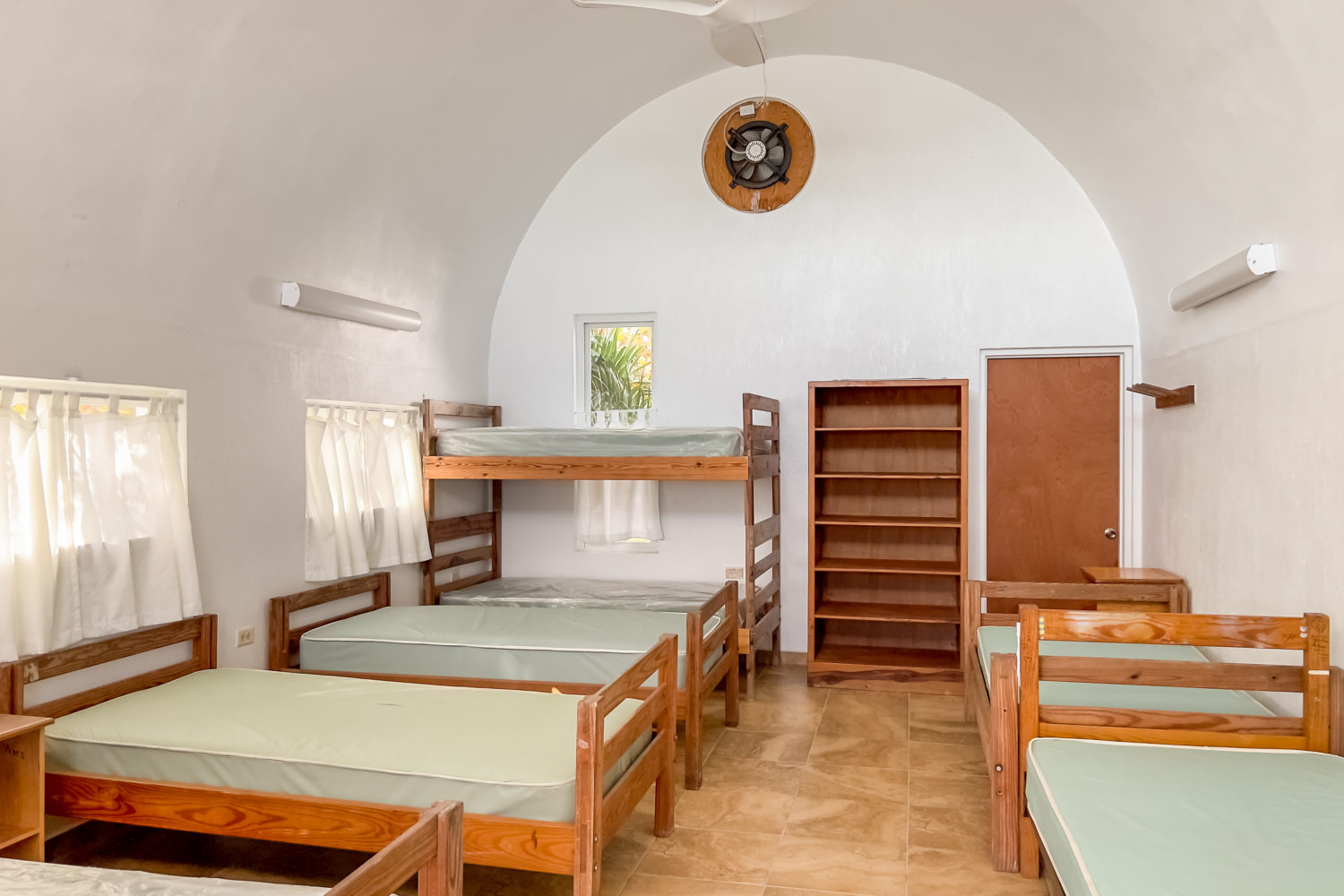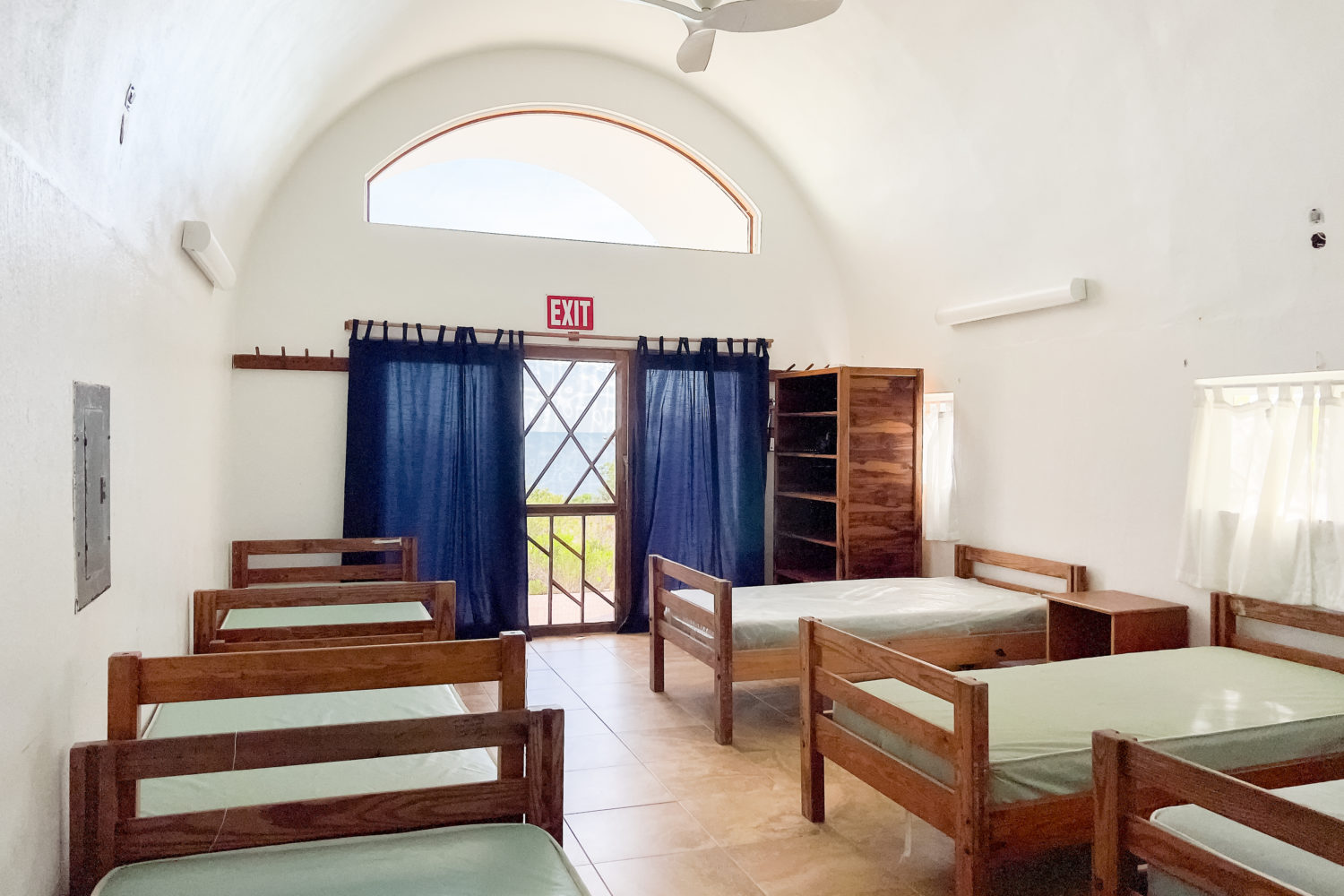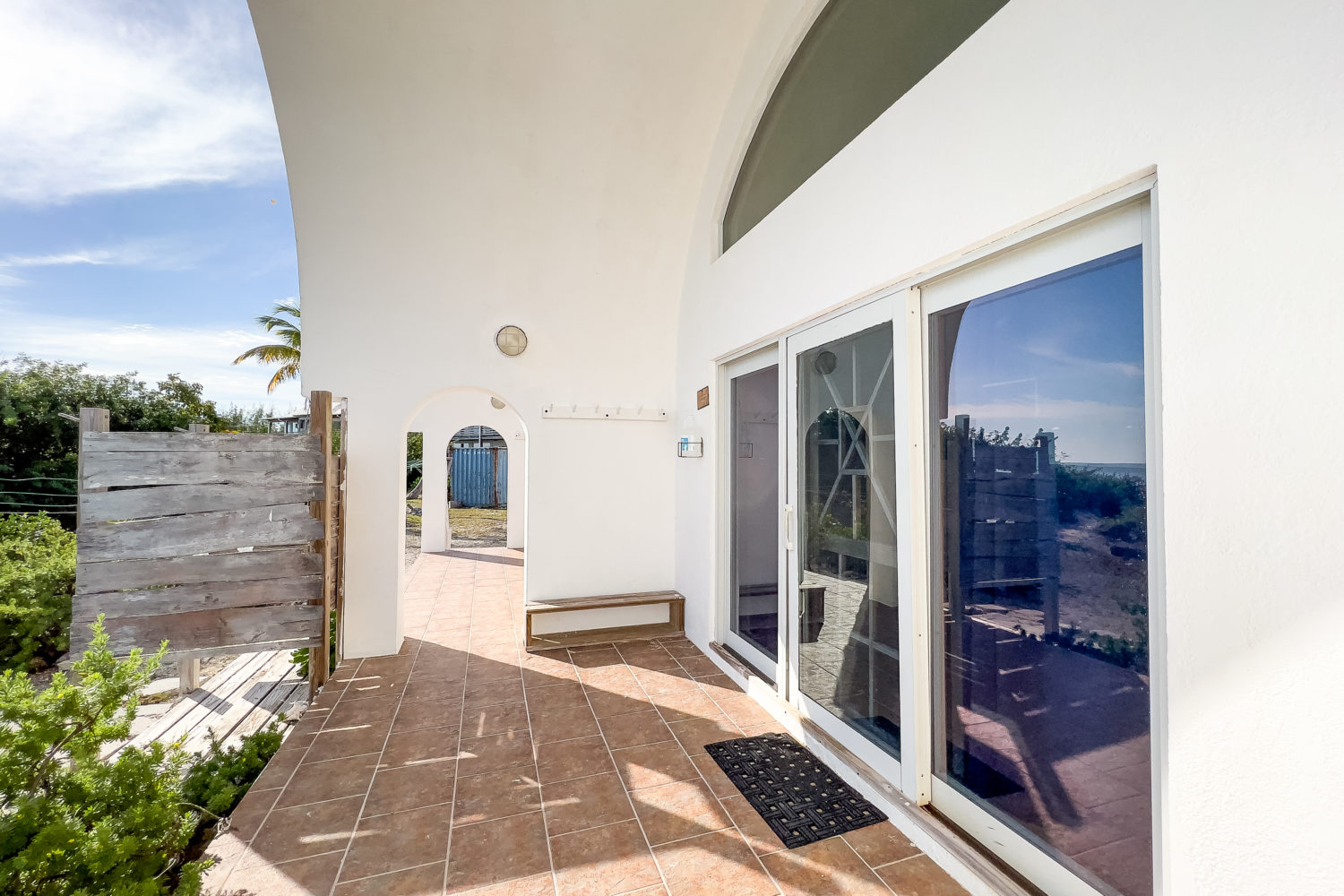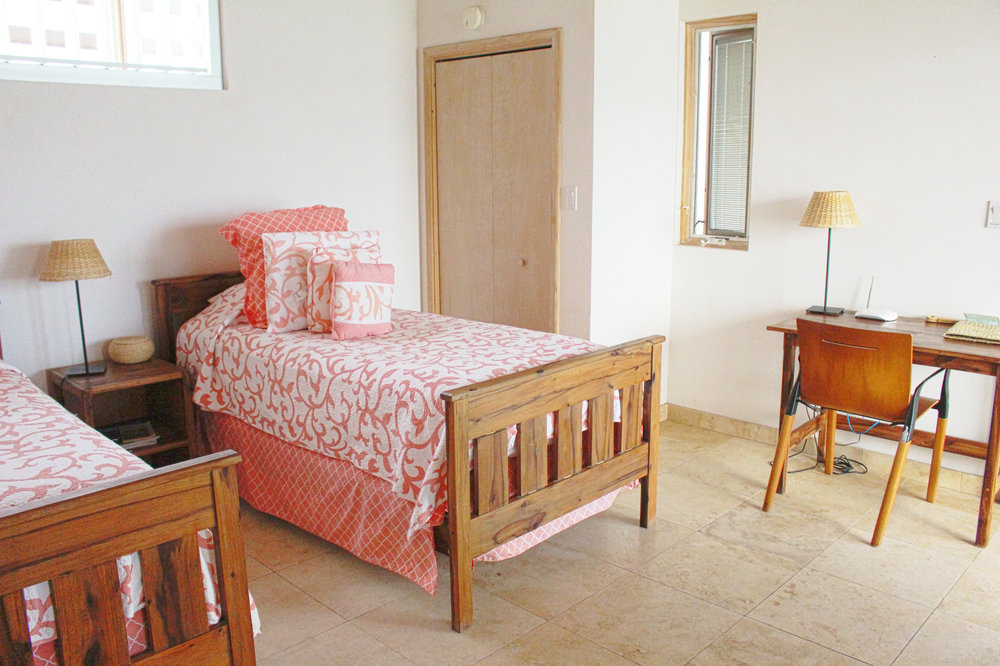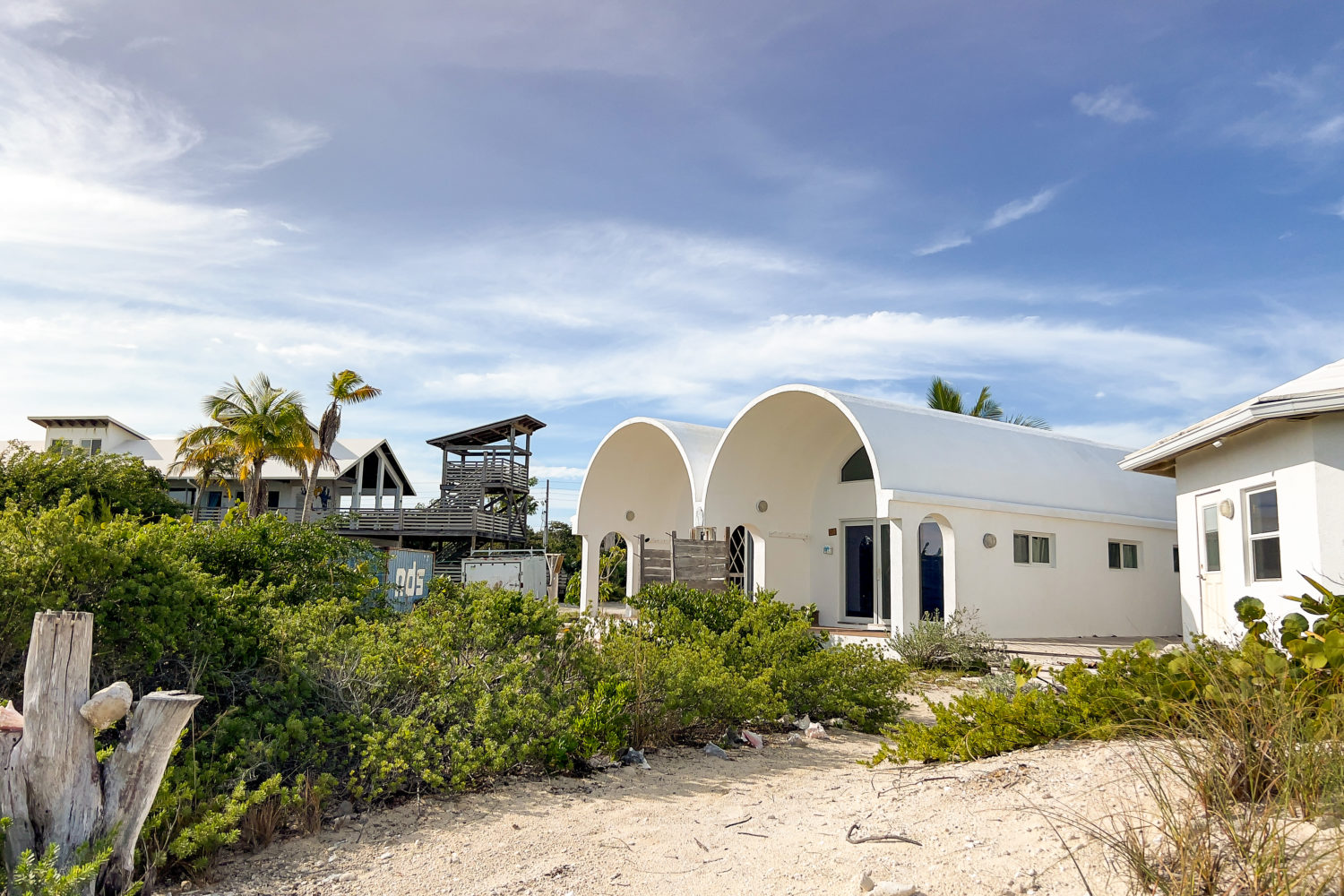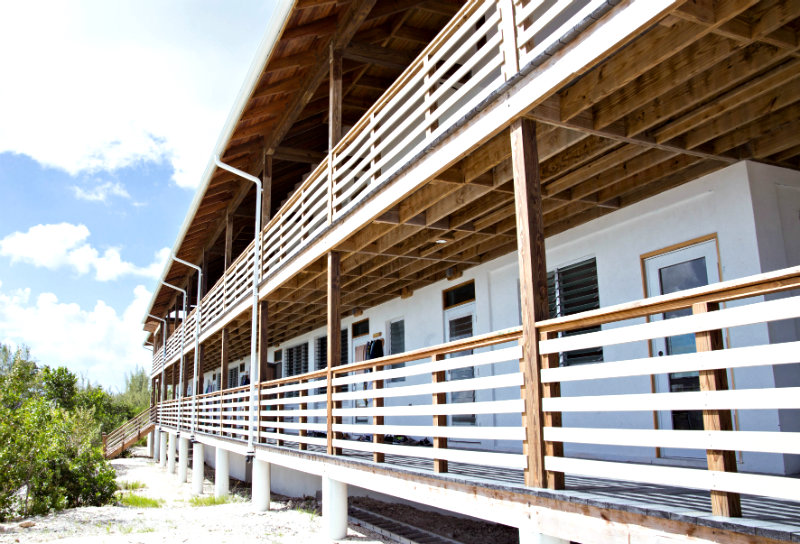Accommodations
Your Island Home
Four dormitory style living quarters, which serve over 1000 local and international students annually, are spread across campus. In addition, our Hallig House offers conference center accommodations for visiting professors, government officials, and short-course leaders, and our Anderson-Cabot Graduate Hall (known as Grad Hall) provides comfortable living space for visiting graduate students and interns.
With a commitment to design beautiful, comfortable spaces that have minimum impact on their surroundings, our campus living areas are built using materials that are Green Certified or natural to The Bahamas.
Our Dormitories
We have four dormitories spread across campus. Two of these dorms are located on The Island School’s campus and can accommodate 24 people each. These dorms are divided into two wings, which can hold a maximum of 12 beds and have separate bathrooms. The wings are separated by a common room with couches. These larger dorms house Semester and Summer term students and are only available to others at select times throughout the year.
The other two dormitories are located at the Cape Eleuthera Institute, and each can accommodate 16 people, typically used for Visiting Programs. Each dorm is divided into two separate rooms, containing eight beds each, with an adjoining common bathroom.
Hallig House
Hallig House is the hallmark of the Cape Eleuthera Institute’s campus, showcasing the capacity of reducing our impact on the environment and living more responsibly in a place. The building was designed as an educational model for island nations, as it creates dialogue about how built spaces can reflect our values about community and the environment, while also inspiring creative thinking. Led by Warren Wagner of W3 Architects and designed by a team of conservation systems specialists, the building features innovative elements, which solve specific regional issues.
The building’s structure and shape, construction materials, and renewable energy and waste management systems all demonstrate how local and national development can maximize locally available resources while minimizing impact on local environments. The insulation is made from recycled denim, the kitchen countertops from recycled glass bottles, and the decking is a product of post-consumer plastics and used tires.
The Island School Stories
Having never experienced dorm life before attending the Semester program and feeling concerned that I would have no personal space, I came into the prospect of dorm life hesitantly. Now I can say without question that the community and support system formed within the dorms are like no other.
Anderson-Cabot Graduate Hall
Anderson-Cabot Hall is the first higher education facility built to support local and international graduate students in The Bahamas. Graduate Hall is three stories tall with an observation tower, kitchen, faculty proctor apartment, and space for more than 40 beds.
LEED-certified and primarily built with local materials, Anderson-Cabot Hall is an ultra-green building. With state of the art lighting and passive cooling, the building will be a net exporter of energy from its 10 kW solar array. A 40,000 gallon basement cistern collects more than enough water to care for the inhabitants, and an advanced waste water system will recycle and responsibly manage all discharge.
